Steel fallen sakura petal: the history and death of the battleship "Yamato"
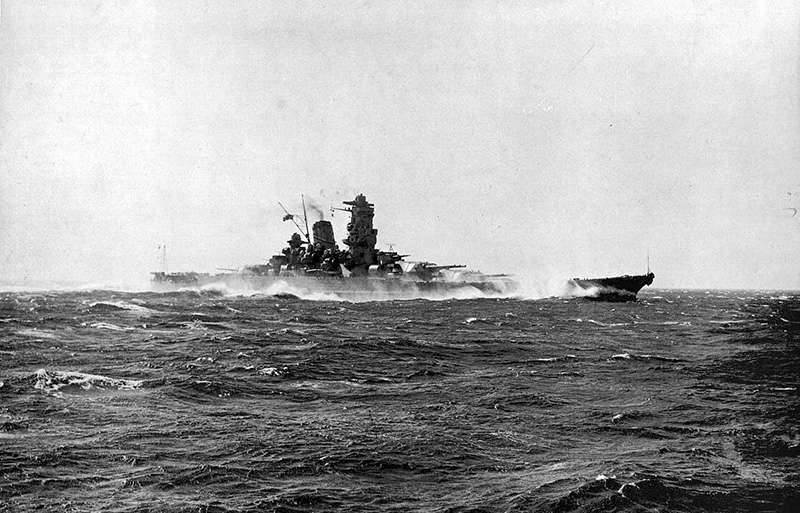
On the morning of April 7 1945, at about 10 hours with a small one, the pilots of two PBM Mariner flying patrol boats noticed a Japanese squadron heading for the island of Okinawa. In its center was a huge battleship, similar to the two that had already met the Americans during the battle in Leyte Gulf. Of the other significant targets, a cruiser was visible, the aircraft carrier was not visible - only the destroyers of the escort. So, intelligence data was correct. Initially, the submarines “Tredfin” and “Heklbak” patrolling in the area reported on the detection of an enemy squadron on the evening of April 6, and in the morning the ships were visually identified by the Corsairs of an Essex aircraft patrol, reporting their course. Now both “Mariners” have only to clarify who specifically is trying to intervene in the course of Operation Iceberg - the landing on the island of Okinawa. The observation was interrupted by flakes of tears of anti-aircraft shells, which became more and more. It was clear how the Japanese squadron changed course towards the patronized visitors. Both scouts quietly hid behind the clouds. After some time, Vice Admiral Seyichi Ito, who was in the battle room of the huge battleship Yamato, received a report that the American aircraft carrier unit was seen east of Okinawa, that is, 250 miles from his squadron. The radio interception service recorded a great deal of activity on the air - the intelligence officers were persistently transmitting data. 58-e carrier connection was preparing a hot meeting for his enemy.
Super Response Island Empire
Battleships of the Yamato type were late with their appearance. By the time of their entry into the Imperial Naval fleet the role of the trump card in ocean battles began to slowly but steadily move to aircraft carriers that had recently caused ironic grins. Created by colossal efforts comparable only to the nuclear program weapons or a man’s flight into space, a small and not very rich state, they did not justify the hopes placed on them and did not help the execution of the most ambitious ambitions. The path to the creation of superlinkers was long and thorny: how many projects, very carefully drawn on the drawing boards, became just another roll of paper in the military archive!
Back at the beginning of the 20's. Japan, who believed that the old members of the Great Powers Club were holding her as no more than servants at the table, at which the world pie was being eaten away with appetite, decided to change its image. For this purpose, it was not enough to change clothes from a traditional kimono to a respectable dress coat - this already happened at the end of the 19th century after the Meiji revolution. A demonstration of power was needed, and the power of the sea — after all, it was not for nothing that the Land of the Rising Sun was considered Pacific England. In 1920, the Japanese parliament adopts the impressive shipbuilding program "8 + 8", according to which the imperial fleet was to be replenished with eight new battleships and the same number of battle cruisers. The old-timers of the naval Olympus, the British, and the Americans who had recently moved to their brazen lines, were for some reason agitated. Execution, even partially, of these ideas would greatly disturb the balance and power balance in the Pacific basin. Another question would be if the Japanese economy was not too muscular. Of course, such a scale and a more developed state would force one to think hard about the conformity of desires and possibilities. But we must not forget that the Japanese people, unlike the Western people at that time stories was very patient, hardworking and had very limited needs. Who knows, there could have gone to extreme measures, right up to the rationing system, but the ships (most of them) would still be completed. Gentlemen with the cold gaze of professional players also understood this and took it into account and therefore gave a full swing to such a phenomenon as the International Washington Conference. To polite little people in immaculate tails, they kindly made it clear that the problems that the economy of their island state began to face may be somewhat aggravated. All this, of course, in a partnership, behind the scenes, under the melodious chime of ice cubes in glasses.
The islanders were not stupid - they were experts in history, philosophy and poetry, custodians of traditions and family swords. They signed a treaty: Japan actually renounced its naval claims, in effect recognizing the primacy of England and the United States. But courteous smiles and bows hid ideas and designs that were even colder than ice. 8 + 8 became history, only two ships from this program, the Nagato and Muttsu, were completed and put into operation. "Akagi" and "Kaga" continued their lives as aircraft carriers. "So what, - reasoned in the naval headquarters. “We have no opportunity to outrun the white barbarians quantitatively - we will find the strength and ability to surpass them qualitatively.” It should be noted that in the submission of the then Japanese, the places of residence of various barbarians began somewhere outside their own territorial waters.
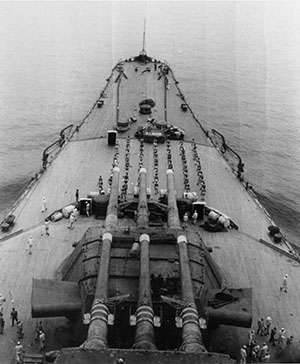
Began long constructive and design research. The first project of the future ship was formed by Rear Admiral Yuzuru Hiraga. The promising battleship was in some way reminiscent of the first fruit of the Washington agreement - the British Nelson - but much more sophisticated and armed with 410-mm guns. In the subsequent Hiragi projects, the displacement of his creation grew smoothly, leaving behind the limit in 35 thousand tons. The idea was further developed from another author, 1 captain of the rank Kikuo Fujimoto, who replaced Hiragu as the chief builder of the fleet. It was at Fujimoto that the impressive 460 mm sounded about the caliber of the main artillery. Subsequent projects of this designer hit the concentration of weapons and the number of trunks of the main caliber. One option even provided for the deployment of aircraft on board 12. In the end, due to the tipping of the destroyer designed by Fujimoto, a shadow lay on the career of the main builder and part-time ideologue of future superlinkors. Not having experienced failures, 10 January 1934, he died suddenly.
His business continued and eventually turned into metal the rear admiral of the technical service, Keiji Fukuda. It was he who had the honor of leading the entire extensive complex of research works on future ships, whose dimensions will impress even on drawing boards. In the spring of 1934, the project was taken seriously - it was no longer a search for a concept or an idea; it was its faceting and polishing. Retired, but not losing weight and authority in the military-technical circles, Hiraga influenced the relatively young Fukuda and the whole course of the matter. Gradually, the battleship lost all the exoticism inherent in Fujimoto, and began to look more like a classic one. By 1937, the design idea, which passed successively through the 24 design options, tested on the 50 scale models, was finally close to design. Creation of the ship was replete with many ideas, successful and not very much. So, at a certain stage, the decision arose to equip the battleship with diesel engines because of their excellent economy. However, from a technical point of view, this was not feasible - the Japanese engines of such a system were even more raw and unfinished than the German ones. And after assessing the situation, they prudently returned to the turbines. Nevertheless, in the design there was, for example, a newfangled then bulbous nose. In the end, after numerous revisions and corrections of 20 in July 1936, the design version under the symbol “A-140-F5” was approved by the Maritime Ministry.
The birth of giants
Construction of ships did not lay off in the long box. 4 November 1937 in the dry dock of Kure officially laid the first ship of the series, the future Yamato. The construction site had to be upgraded literally on the move: the dock was deepened by a meter, and the lifting capacity of the bridge crane was brought to 100 tons. The second ship of the series, Musashi, was laid at the shipyard of Mitsubishi Corporation in Nagasaki 28 in March 1938. For the construction of such enormous battleships, a whole set of technical measures was required. Since the series was not limited to two units (the second pair was going to be laid in 1940), a sufficiently developed infrastructure for the maintenance and repair of ships of this displacement was required. In addition to the three existing dry docks (Kure, Nagasaki and Yokosuka), it was planned to build three more, capable of accepting 65 thousandth giants. For transporting towers, barbets and main-caliber guns, a special transport ship Casino was built, and a powerful tug Sukufu Maru was built to tow huge hulls.
Needless to say, unprecedented secrecy measures were taken during the construction of ships. Photos of all shipyard workers were placed in special albums and carefully compared when entering and exiting. The Yamato and Musashi corps themselves were sheltered from prying eyes with sisal mats (coarse agave fiber used to make ropes) in large quantities, which caused a shortage of this material throughout Japan, primarily among fishermen weaving it. network.
8 August 1940 was brought out of the dry dock in a solemn, but without excessive pompous atmosphere of the Yamato. Photography and filming of the case was not conducted. After the procedure, the ship was covered with camouflage nets, and its completion continued afloat. Such security measures bore fruit: although the first rumors about new ships became known overseas at the end of 1942, and the appearance of the appearance appeared after the battle of Leyte, the Americans managed to get exact characteristics of the superlinkors in full only after the war ended, when the Yamato, Musashi and converted into the aircraft carrier Shinano were sunk long ago. The commission signed the act of accepting Yamato into the 16 fleet of December 1941, but various finishing work on it was carried out for more than five months, and finally it was only on the 27 of May 1942.
Together with his Musachi sistership, he became the first in several categories: the largest battleship, the largest warship and the largest ship ever built. The total displacement of this giant reached 72 thousand tons. The longest length was 266 m, width - 38,9, draft - 10,4 m. The total capacity of the four turbo-tooth units at 12 boilers consisted of 150 thous. Hp and allowed to have maximum speed in 27 nodes. The Yamato's armament consisted of nine 460-mm guns in three main-turrets, twelve 155-mm auxiliary-caliber guns in four towers, and twelve 127-mm anti-aircraft artillery barrels. The ship was protected by the main armor belt of maximum thickness in 410 mm, the front of the towers was covered with 650-mm plates, and the conning tower was 500-mm. The crew of the battleship numbered 2400 people.
Yamato had many interesting design features. Its upper deck was not cluttered with ventilation shaft outlets, a large number of boats and other equipment. All this had to be minimized to the limit due to the monstrous pressure of muzzle gases produced by shots from 18-inch guns. For example, all fans only slightly protruded above the surface of the deck and were directed away from the towers. Instead of the commonly used imported tick as a deck flooring, a local resource was used - Japanese pine hinoki. Post-war testing by Americans of armor steel samples applied on the Yamato revealed its greater fragility in relation to the American and English. The gradual deterioration of relations between the former “best allies,” Japan and England, after World War I, had a negative impact on Japanese shipboard armor technology. Throughout the war, the anti-aircraft armament of the battleships gradually increased due to the installation of 25-mm anti-aircraft guns of the 96 type, which were, in fact, an improved version of the French system of the Hochchis company, which the Japanese acquired in the early 1930's. On the ship, these machines were placed in single and triple-barreled versions. At 1941, they provided fairly good protection against aerial targets, but by the middle of the war they were outdated. In the summer of 1943, the Yamato was equipped with a radar.
In the ranks
Formally commissioning in December 1941, the superlinker went not into battle, but into the Inland Sea, spending time in anchor, additional equipment and artillery exercises. The imperial fleet swept the deadly hurricane across the expanses of the Pacific Ocean, sweeping a few Allied forces from its most secluded corners with an iron broom. 27 May 1942, the next commission after a detailed inspection considered the battleship quite combat-ready. At this time, the Japanese Navy was in full swing preparing to carry out such an unhappily ended blow to the Midway Atoll. On the "Yamato" is located itself the commander of the United Fleet Yoroka Yamamoto. The ships of the line, in whose group the new ship went, played the role of power insurance in case the Americans risk their few battleships. The main forces of the 1 fleet, in which the Yamato was stationed, moved almost 300 miles away from Admiral Nagumo's carrier strike mix and the airborne detachment. On the one hand, the battleships were in relative safety, on the other, the commander was actually two days from his advanced forces.
Even before that, the powerful Yamato radio stations intercepted a message from the enemy submarine Cuttlefish, which reported an increased activity of the Japanese. A little later, the headquarters of the 6 fleet (Japanese) from the Kwajalein Atoll transmitted radio intercept data, according to which two American connections were operating in 170 miles north of Midway. Yamamoto planned to transfer this alarming information to the aircraft carrier Akagi, the flagship of Nagumo, but one of his officers dissuaded the admiral, arguing that this could break the radio silence. The fact that Americans have long been reading Japanese ciphers, and no radio silence will affect the situation in the Yamato conning tower, and nowhere else in the Imperial fleet, they had no idea. The outcome of the battle for Midway was the destruction of four aircraft carriers and the abandonment of the landing operation. At midnight 5 June 1942, the Japanese battleships went backwards, never making a single shot at the enemy.
After spending some time in Japan, 12 August 1942 Yamato, as part of a squadron of ships and under the flag of the commander, departed for the largest base of the Japanese fleet in the center of the Pacific Ocean - Truk Atoll. The battle for Guadalcanal began, and Yamamoto wanted to be closer to the front line. Sea and air battles boiled around the island of volcanic origin from the archipelago of the Solomon Islands, with varying success. Both sides threw all the new ships, airplanes and troops onto the scales of war. The Japanese "saved" by using only the old cruisers "Hiei" and "Kirishima" of pre-retirement age. Having met in the night battle with the newest American "Washington" and "South Dakota", the veterans were badly damaged and subsequently sank.
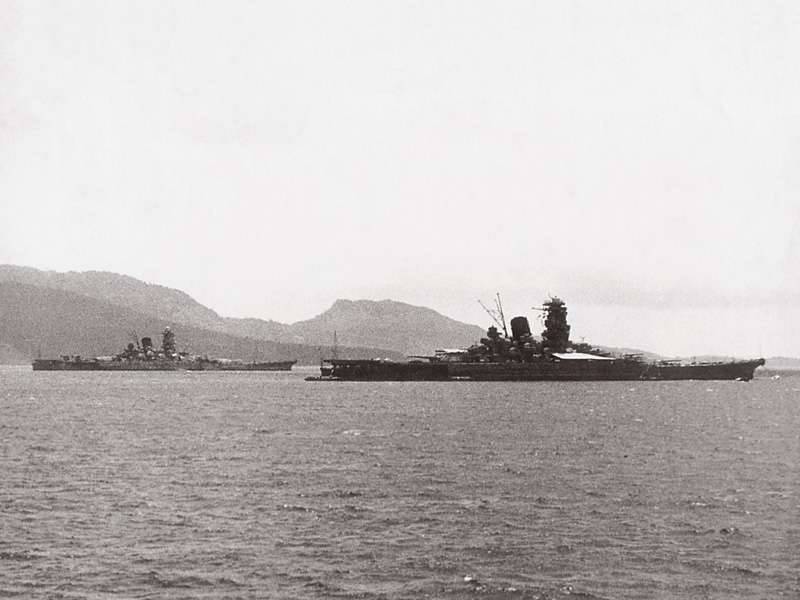
The newest Yamato and Musashi, which joined at the beginning of 1943, continued to calmly anchor inside the huge Truk lagoon, far from the passions and gushing blood that had broken out in the south. In May, Yamato departed for Japan to modernize and repair. Having been in the dry dock of Yokosuki consistently two times, in May and July, the battleship received a radar type 21. The number of 25-mm anti-aircraft guns was increased, and the power plant was prevented. Coming out of the dock, the battleship spent almost a month conducting planned combat training, after which he left for his former home base, Truk Atoll. Taking advantage of the opportunity, the Japanese command commissioned the new ship to transport supplies and supplies to the personnel of the Japanese Singapore base. The crew was very dissatisfied that the huge warship was constantly used not in the case: either as a floating headquarters, or as an ordinary military transport. Arriving at Truk, "Yamato" again took place at the anchorage. A couple of times he went to sea in the squadron in connection with the possible attacks of the islands Enyvetok and Wake, but both times to no avail.
In December, the battleship 1943 did not find a better use for escorting a convoy to Japan, although deep in the Japanese defense perimeter, the main threat so far has come from an ever-increasing number of submarines. December 12 "Yamato" in the convoy left Truk. Having arrived safely in Yokosuka, after some time he took the infantry regiment on board and set off back. According to the plan, the route of the battleship, which was actually used as a high-speed armored troop transport, under the escort of two destroyers was supposed to run through Truk to the Admiralty Islands with a stop at Kavieng (New Ireland). However, it so happened that 25 December 1943 northeast of Truk squadron hit the radar screen of the Skate submarine patrolling in the area. Radio interception allowed the Americans to inform the submarine commander in advance about the enemy ships approaching. Going for reinsurance anti-submarine zigzag and performing the next turn, "Yamato" was in a convenient position for the Americans. "Skate" fired four torpedoes from aft vehicles. One of them landed the battleship in the starboard side near the aft tower of the main caliber. The explosion was so strong that the Japanese thought that the ship had received two, not just one hit. 3 thousand tons of water accumulated inside the hull, the cellar of the tower was flooded. The damage was not fatal, but very painful. Skate was attacked by depth charges, but to no avail. Yamato returned to Truk, where he was hastily repaired, and departed for repair in Japan.
Having gotten into dry dock, the battleship was not only repaired, but also upgraded: the two onboard 155-mm turrets were replaced with six 127-mm guns. The number of 25-mm anti-aircraft guns has been increased again, new radars and equipment have been installed that capture the radio emission, which is a copy of the German Metox instrument. The whole complex of works was completed by 18 in March 1944. After completing the planned exercises and taking on board the troops and supplies, 22 in April 1944 of Yamato went to the Philippines. After unloading in Manila, the battleship soon joined other Japanese ships stationed in the inconspicuous Tavi-Tavi Bay in the Sulu Sea near Singapore. Truk, after a series of strikes struck on him, was no longer a safe base, and the Japanese fleet was dispersed on the rear bases in relative proximity to oil fields, which facilitated the supply of fuel to ships. Soon, Musasi arrived in Tavi-Tavi, who also worked fruitfully in the field of military traffic.
Both ships finally succeeded in undergoing a full-fledged combat operation during the battle in the Philippine Sea on the 20th of June 1944. As part of the strike force (in addition to two superlinkers, they included the old Congo and Haruna, seven heavy cruisers and three light aircraft carriers with incomplete air groups) “Yamato” and “Musashi” walked 100 miles in front of the aircraft carriers of Admiral Ozawa, actually acting as a delicious bait for the enemy deck aviation. But the Americans did not peck at this simple trick - their primary concern was the sinking of aircraft carriers. In this battle, on June 19, 1944, Yamato first used its artillery in combat, firing returning Japanese fighters with shrapnel shells. Four Zeros were damaged. This participation in the operation and limited. The battered fleet retreated to Okinawa, and then to Japan.
The Yamato again increased the anti-aircraft armament and, after plunging an infantry regiment on it, sent it again to Okinawa. Having made another transport flight, Yamato and Musashi went to the rear anchorage in Ling Bay near Singapore. There both ships spent time in intensive combat training and joint firing. The battle in Leyte, the largest naval battle of the Pacific Company, was near. The threat of loss of the Philippines forced the Japanese command to put practically all combat-capable ships into the sea.
Battle of the Philippines
The plan of operation "Shyo" provided for the possible covert approach of three squadrons, and one of them (the aircraft carriers of Ozawa, the battleships Hyuga and Ise, etc.) played the role of a decoy duck and had to divert the attention of the American carrier-based aircraft. At this time, the 1 and 2 sabotage of Admirals Kurita and Nisimura would secretly force the San Bernardino and Surigao Straits, attacking the fleet in Leyte Bay. The Kurita connection, which included the Yamato and Musashi, was the strongest: total 5 battleships, 10 heavy, 2 light cruisers and 15 destroyers. The battleships of the battleships were repainted black to reduce visibility during the night break.
18 October 1944. The squadron left its quiet parking and headed to Brunei, where it was loaded with fuel. October 22 connection went to the Philippines, where the fellow "Yamato", "Musashi", will not return. Failures began to pursue sabotage from the very beginning. On October 23, an American submarine sank the flagship of Kurita, the heavy cruiser Atago, after which the flag had to be moved to Yamato. Soon the heavy cruiser “Maya” was lost from the torpedoes of the other boat.
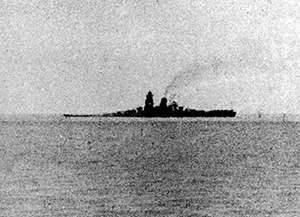
October 24 for the Japanese already seriously undertook deck aircraft. Wave after wave of American torpedo bombers and dive bombers rolled on the connection Kurita. They were met by an avalanche of fire erupting from a hundred trunks, which did not prevent, however, a number of hits. Most of all went to "Musashi", received a few torpedoes and bombs in his huge body. Because of this, Kurita ordered the total speed to be reduced to 22 nodes. By the beginning of the second hour, the battleship was already badly damaged, flooding spreads on it, the trail of flowing fuel oil stretched behind the ship, and the speed dropped to 8 nodes. Under him, Kurita left two destroyers, unable to distract from the main combat mission. Caught by enemy aircraft, Musashi was dying slowly but surely. In 15 h. 30 min. Kurita nevertheless turned back and approached the perishing ship. The exact number of torpedo and bomb hits is still controversial, but it can be said with certainty that more than a dozen of them got the battleship. The trim on the nose reached already critical eight meters, the roll on the left side - 12 degrees. Water flooded the engine room, and soon the ship lost speed. In 19 h. 15 min. she received a command to get ready to leave the ship, the flag was lowered, the portrait of the Emperor was evacuated. In 19.36, the crippled, but musashi, which had fought to the last, went on its final journey to the bottom of the ocean. 1380 people were selected from the crew of the destroyers. In the battle that took place, Yamato was also damaged: at least five bombs hit it, it took about 3 thousand tons of water, but on the whole it remained operational because the attention of American aviation was concentrated on Musashi.
The next morning, the Yamato 460 guns finally opened fire on American escort aircraft carriers and destroyers off Samar Island, taken aback. The fact is that at this stage the Japanese plan began to work - part of the enemy forces threw against Ozawa aircraft carriers with half-empty hangars, and the old battleships covering the landing on the island of Leyte destroyed the 2 sabotage squadron of Nishimura during the night battle. Only escort aircraft carriers and destroyers remained near transports. American pilots reported to the authorities that the Japanese ships were either sunk or damaged, and that they turned back. In fact, having assessed the situation and received a suggestion from the command, Kurita returned to the previous course and in the morning collided with a group of escort aircraft carriers (six units) along with three destroyers and four destroyers.
We must pay tribute to the crews of these ships - they did not become confused under enemy fire, and having developed the maximum speed, they began to lift planes on which everything that only came to hand was hung. Destroyers put a smoke screen. For some reason, the Japanese, which started the fight, did not have full information about the enemy as a fight with a full-fledged aircraft carrier connection, which, as we know, does not go without a linear cover. This was one of the reasons for Kurita caution. After a brief battle, sinking an escort aircraft carrier and two destroyers, the admiral ordered the retreat. He had no idea that the group of small ships was the only obstacle between his squadron and the crowd of defenseless transports. One way or another, the 1-I sabotage group left, just like it did, through the Strait of San Bernardino. The battle was completely lost, and the Japanese fleet ceased to exist as an organized fighting force. Wounded, Yamato went to Japan to heal wounds. In November 1944, it went through a recent upgrade. The situation at the front deteriorated more and more - the Japanese islands began to be exposed directly to air raids.
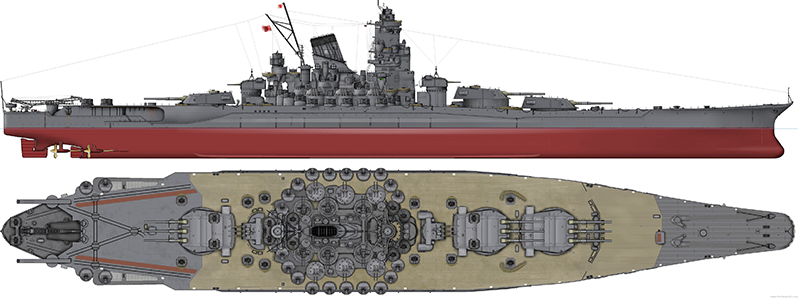
Doomed
All winter 1944 – 1945 "Yamato" changes parking and holds exercises. What use to find a huge ship, the command had a vague idea. The Americans helped to make a decision by launching Operation Iceberg - a landing on the island of Okinawa. In late March, the battleship received full ammunition and was fueled. He felt a complete shortage, and therefore had to scrape the bottom of the barrel. 3 of April was announced the order of Admiral Toeda: as part of a special strike force (light cruiser Yakagi and eight destroyers) at high speed to advance to Okinawa, where to strike at transports and other ships of the enemy. How this was accomplished under the conditions of the complete domination of the enemy at sea and in the air was not specified. In fact, the squadron was a suicide bomber. Vice-Admiral Ito, Commander of the Special Shock Squad, objected to such a venture, believing that it was a waste of ships and resources. But the order was approved at the top.
The battleship received 3400 tons of fuel - all that could be found was that the sailors of older age and the sick got off the shore, all the wood was dismantled - even chairs and tables. In the evening of April 5, the commander of Yamato, Captain 1 of rank Kosaku Ariga, gathered the entire crew on deck and read the order for the march. The answer was a deafening “Banzai!”. 6 April at 15 h. 20 min. A special strike force left the Inland Sea accompanied by three escort ships, which soon turned back. Air cover was carried out by two seaplanes - that was all that the once powerful naval aviation could put out. The Americans already had evidence that the enemy was preparing a sortie to Okinawa. The Japanese ships were by this time (February evening 6) detected by submarines. According to the survivors, the mood on board the battleship was both solemn and doomed: the sailors prayed in the ship’s Shinto temple, wrote farewell letters.
On the morning of April 7, the ships were fixed first by deck Helket and then by flying Mariner boats. It became clear that the last battle was coming. In 11 h. 7 min. An onboard radar found a large group of aircraft in 60 miles from the ship. The combat alarm was already announced long ago - the crew was at combat positions. In 11.15, the first group of "Helkets" appeared above the squadron and began to describe circles above it. The stroke has been increased to 25 nodes. Soon after the reconnaissance, the main forces of the attackers appeared - in total, 227 of American aircraft took part in the strike on the Japanese Special Detachment (most of them were dive bombers and torpedo bombers).
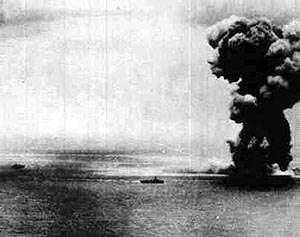
The first wave of 150 aircraft was seen with the naked eye at 12.32, and in 12.34, anti-aircraft guns erupted the first batch of steel and fire. Soon, the first hits of armor-piercing bombs occurred - the deck superstructures were damaged and several 127-mm guns were destroyed. In 12.43, "Evengers" from the aircraft carrier "Hornet" were able to put one torpedo into the port side. As soon as the first wave, having worked, retired, in 13 hours it was followed by 50 airplanes, mostly dive bombers. No respite was given to the Japanese. This time the attacks were carried out from different directions. The aircraft processed the deck and superstructures from machine guns, making it difficult to carry out aimed fire to anti-aircraft guns. New bombs hit - the calculation was to weaken the defense of the ship. The third wave was not long in coming - it appeared in 13 h. 33 min. First three, and in 13 h. 44 min. two more torpedoes hit the Yamato in the port side. Two boiler rooms were flooded, the auxiliary steering wheel (ships of the Yamato type had two steering wheels) was stuck in the right-to-board position. Several thousand tons of water fell inside, creating a heel to 7 degrees. The counter flood has so far managed to straighten it out. The battleship's speed dropped to 18 nodes; the centralized fire control system was no longer there.
In 13 h. 45 min. the last attack began, during which at least four more torpedoes and several bombs hit the ship. Anti-aircraft fire "Yamato" began to weaken. In 14 h. 5 min. the light cruiser Yahagi sank from torpedo hits. Yamato speed dropped to 12 nodes, in 14 hours. 17 minutes another torpedo caused flooding of all remaining boiler sections. The dying but not surviving survival service reported on the bridge in flames that she could no longer control the sinking of the ship. Yamato lost its turn - the list reached 16 – 17 degrees. The position of the ship was hopeless. One after another, the equipment nodes failed, communications did not work, the central part of the ship was engulfed in flames.
In the conning tower, keeping the samurai calm, sat Admiral Ito, who had not uttered a single word since the beginning of the battle, leaving the commander Ariga to lead the battle. After hearing the report of the senior officer, Ariga told the commander that he considered it necessary to leave the ship. Ito did not mind. The crew began to concentrate on the deck and rush overboard. Yamato began to slowly fall on board. When the roll reached 80 degrees, there was an enormous explosion - it was even seen on American ships near Okinawa. Flames shot out at 2 km. Rode cellars main caliber.
In 14 h. 23 min. The world's largest battleship ended his combat career. 3061 people died on it, including Vice Admiral Ito and the battleship commander. 269 people raised from the water. A light cruiser and four destroyers were sunk. Americans lost 10 aircraft that killed 12 people - that was the price for sinking a whole squadron of ships. Officially, 12 August 1945 was expelled from the fleet Yamato and Musashi.
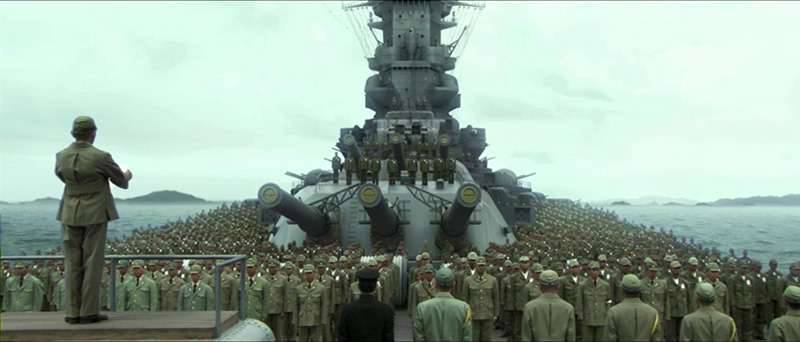
1 August 1985, the deep-water unit "Paisis-3" of an international research expedition discovered the remains of a battleship in the East China Sea at a depth of 450 meters. At the beginning of the 2000's The Japanese shot a colorful and realistic, not alien to naturalism, the feature film Yamato, for which a full-size 190-meter model of the bow of the battleship was specially made. After the end of filming before dismantling, it was open for some time to visitors. The Yamato is still the largest battleship ever built.
Information